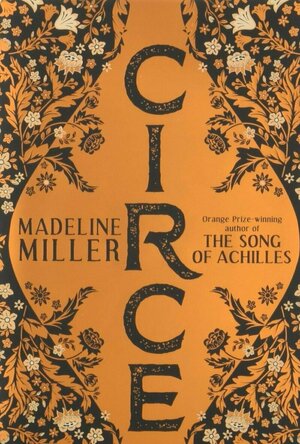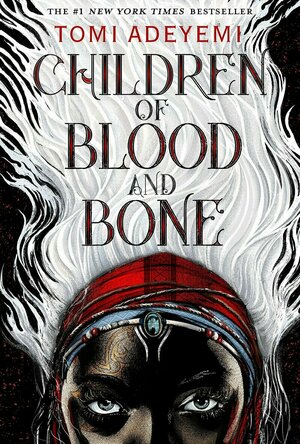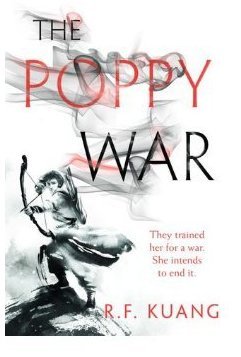Ivana A. | Diary of Difference (1171 KP) rated Circe in Books
Aug 21, 2018
<b><i>WHEN I WAS BORN, the name for what I was did not exist.<i/></b>
<img src="https://gipostcards.files.wordpress.com/2018/07/maxresdefault.jpg?w=636"/>;
I was waiting for two whole months to get this book from the library. And I finally had a chance to read Circe from Madeline Miller. A book that everyone was talking about. The only thing you were gonna see on Instagram. Well, here I am – sitting with the cool kids now, I’ve read this book.
The reason I wanted to read this book wasn’t because I wanted to be part of the cool kids. Actually, it was because Greek Mythology has a special place in my heart. See, I was born in Macedonia, a country full of history, and so very close to Greece, where histories and cultures and traditions match and mix.
When I was in school, our teachers focused hard on history. Especially Roman and Greek Mythology. So yes, I grew up with Homer’s Iliad and Odyssey and yes, I know all the gods out there, what they do, who they married, who their children are.
I have read about Circe, but I have never given her any meaning, as she is not mentioned a lot in Homer’s works, as you might already know. And then suddenly, there is a book about her life. I had to read it!!!
<b><i>AND I ABSOLUTELY LOVED IT! FROM THE BOTTOM OF MY HEART!</i></b>
This might be my favorite book of 2018!
<img src="https://gipostcards.files.wordpress.com/2018/07/img_20180625_200755_238.jpg?w=636"/>;
I enjoyed Madeline’s writing style. It was so explanatory and calm, and soothing, like swimming in nice calm waters. You would just gulp her words as you read, and before you know it, you have read 200 pages.
Circe, oh Circe! Her character was so well described – such a strong powerful woman. We start with her childhood, to her growing up, and we follow the process of how she learned things the hard way, how she is naive, and then suddenly isn’t, how she discovers the power she holds within, despite everyone else mocking her and saying otherwise. We see how she decides to say no, how she is not afraid to be a rebel, and how she suffers, and loves, and protects, and cares, and survives, and lives!
You will read a story about the love a mother has toward her child, the love a woman has toward her man, the love a son has towards her mother, the love for freedom, the love for glory…
If you love Greek Mythology, you will get the chance to say hi to some of your favourite gods, nymphs, titans, monsters – Zeus, Athena, Poseidon, Prometheus, Odysseus and many more which I will fail to reveal.
I hardly believe that this is a great book for introducing Greek Mythology to new young readers. I also hardly believe that this book will change the thoughts of many people, the way they see things, the way they live, the way they think.
It was one of my favorite things about him: how he always fought for his chance.
There are a lot of side characters that give their own meaning to the story as well, and there is also Odysseus, and at times it feels as this is his story, but in the end you realized that this story belongs to Circe only.
<b><i>Do not listen to your enemy, Odysseus had once told me. Look at them. It will tell you everything.
I looked. Armed and armored, she was (Athena), from head to foot, helmet, spear, aegis, greaves. A terrifying vision: the goddess of war, ready for battle. But why had she assembled such a panoply against me, who knew nothing of combat? Unless there was something else she feared, something that made her feel somehow stripped and weak.
Instinct carried me forward, the thousand hours I had spent in my father’s halls, and with Odysseus polymetis, man of so many wiles.</i></b>
To all of you out there – please take your time to read this book! It will leave you breathless, inspired, motivated and it will change your life forever. It changed my life – that’s for certain!
I am not familiar with the second author, Michelle Sagara. This short story is a prequel to her Chronicles of Elantra series and introduces the reader to the character of Kaylin Neya. I was a little lost when I began this story because of the variety of characters that I was introduced to at the very beginning. I actually was not even sure who the story was about at first. The story seemed a bit bogged down with details and descriptions, and Kaylin seemed to get lost in the mayhem of Sagara's attempt to introduce the reader to the world of Elantra in such a short tale. I stuck with it, though, and by the end of the story I was intrigued enough to want to continue on with the series in Cast in Shadow (The Chronicles of Elantra, Book 1).
The third story, written by Caleron Haley, is meant to be a prequel to Mob Rules (Luna Books). I am not familiar with this author either, and when I began this story I realized immediately that this story was heavily-flavored with gangster-style speak and vocabulary, even more so than the urban fantasy elements. I really tried to adjust to the language used in the story, but the lack of explanation to accompany such terms as "juice" and "outfit", as well as the overabundance of foul-mouthed language and typical gangster lingo like "capping" someone mad me lose interest in the actual plot of the short story halfway through. I am sure there are other readers that enjoy this style of story-telling, but I am not one of them.
Debbiereadsbook (1585 KP) rated Bite Me (Kitchen Gods #1) in Books
Mar 5, 2018
This is, as far as I can see, the first I've read of Bolden's work, I sure hope it isn't the last! She has a way of not giving you the full picture about something and you aren't quite sure if you missed that bit, or it wasn't mentioned yet, or what?? And I really LOVED that!
Evan and Miles butt heads, right from the start, but equally, they have attraction, powerful attraction. And I loved watching them both ( because we hear from both guys) fight that attraction. Right til they both realize that their jobs are on the line, and they could lose each other too. THEN??? All bets are off and these guys give in to the inevitable.
It's amazing watching Evan come out of himself, watching Miles peel back the layers of Evan's outer casing, to the man inside.
It's not a complicated plot line, nor is it a difficult read. It's very well written and flows beautifully from the butting heads to the but...well....you get the picture. It's not very explicit though, and I really REALLY liked that it wasn't. There is no break up/make up. It's just a really great read!
Back to that not getting the full picture thing. It's about a certain thing that Miles does when he is drunk. Which I found hilarious, but when we get the full story of what was contained within?? You understand why the hints are there, you put the pieces together. Can't say anything else, cos of spoilers, but I really did enjoy not having the full picture thrown at me all at once!
Oh! You'll probably put on about ten pounds just reading this, cos, food porn or what! Miles is, after all, a pastry chef! But, love that the recipes in the book are give as links at the end. Might have to make myself some alcoholic macaroons!
This is billed as book one in the Kitchen Gods series. But some characters pop up who already had their stories written. I'd like to both go back, and forward, with these guys. I love the way Bolden spins her yarns.
so, a perfect Sunday morning read, that kept me fully engaged and I read it in one sitting.
5 stars
**same worded review will appear elsewhere**
Bethany Fletcher (17 KP) rated Children of Blood and Bone: Book 1 in Books
Jun 24, 2018 (Updated Jun 25, 2018)
The characters were cardboard copies of Avatar. Zelie is a mix of Aang and Katara. There is Zelie’s brother, Tzain, who is the only one who doesn’t get magic because screw you Sokka you are not a Bender! They are being chased around by the Prince Inan who wants to impress his daddy but has mixed moral feelings. Hi there Zuko nice to see you again!
The plot was super confusing. There were parts that weren’t explained at all. So Inanas powers are control over someone’s mind right, so he can take someone into his ‘dreamscape’ (basically the Bone Season by Samantha Shannon). Anyway, he takes Zelie into his dreamscape and she hates him as he is a royal and hunting her down BUT she strips off naked and skinny dips? Why? There is no reason and it made zero sense for someone who is terrified of Inan to make themselves that vulnerable.
Zelie gets over her hatred for Inan pretty quick and soon they are lusting after each other. She doesn’t seem to care about the previous hatred and Inan is the only one who struggles morally. Here’s the thing, did they actually have sex? They had sex in Inan’s dreamscape while there physical bodies were actually no where near each other. Zelie was with her brother. So did their minds have sex? Did they share a dream where they both got it on? After Zelie is super awkward about it but it’s like, you didn’t actually do anything, did you? Not explained very well.
I could go on all day but I shan’t. It wasn’t even written well. It just read like the author didn’t know what to write so copied something they knew was succesful. If these things will annoy you as much as they did me then I would suggest skipping this book.
Goddess in the Stacks (553 KP) rated The Poppy War (The Poppy War #1) in Books
Oct 9, 2018
Rin is an interesting character; she's been hard done by, yes, but she makes decisions that only make things harder on herself. So I feel for her a little, but at the same time, girl. Check yourself. What's been done to you doesn't justify what you plan to do to others. I am hoping she comes to see that in the next book, because her rage and need for vengeance definitely gets the best of her in this one.
The Poppy War is an excellently written blend of military fantasy, epic fantasy, and coming-of-age novel. Unlike some books, where the military aspect far overshadows the characters, leaving them flat, Poppy War doesn't ignore the characters to focus on the bigger picture. It's a very good mix of both close-up focus on characters, fights, battles, and zoomed-out strategy and war. It's probably the best military fantasy I've read, and the Asian aspect of it makes it even better. So much military fantasy is western European, or Steampunk, or both. I've been finding more and more Asian and African fantasy, and I am SO HERE FOR IT. I need to try to find more South American fantasy. I know it's out there.
I will definitely be watching for the next book in this series, because it's awesome.
You can find all my reviews at http://goddessinthestacks.com
Ivana A. | Diary of Difference (1171 KP) rated Bright Pink Ink: New & Selected Poems in Books
Feb 3, 2020
<img src="https://diaryofdifference.com/wp-content/uploads/2019/08/Book-Review-Banner-3.png"/>;
<b><i>‘’I was born to destroy everything you ever loved before me.’’</i></b>
It is very hard for me to judge this work and write a book review. It's hard to tell you what I think because I don't feel like I'm an expert in poetry. I love reading poetry, but I don't read it as much. I love poetry, but maybe I don't understand it.
<b><i>Bright Pink Ink: New and Selected Poems</i></b> has a jolly vibe to it, a lot of love & happiness, emotions of loss, missing loved ones and love, as well as a feminist vibe that is refreshing. It was an enjoyable read.
However, it also holds a little bit if monotony with it, very short poems or poems that are written as prose. I encountered a few repetitive sentences on a few occasions and while I know that repeating a line is common in poetry to straighten the meaning and add rhythm - in this occasion it wasn't pleasurable to read.
<b><i>"Maybe I should tell them about my husband's laugh. A sound that erupts as suns inside me till I float - free as dust." </i></b>
I loved <b><i>‘’A poem from 4/14/2015 read on 6/21/2017’’.</i></b> It is written quite well, with two parallel stories happening while you read, in a different timeline. I really enjoyed it, despite the great annoyance that is the date. The only logical date format I know of is day - month - year.
There were a lot of feminist vibes through the poems, which was pleasantly enjoyable. On this topic, <b><i>"Mortal Gods Demand a Sacrifice"</i></b> was my favourite one.
<b><i>"The moon must've thought you were the sun." </i></b>
Thank you to the author Laura Dinovis Berry for sending me a copy of Bright Pink Ink in exchange for an honest review.
<a href="https://diaryofdifference.com/">Blog</a>; | <a href="https://www.facebook.com/diaryofdifference/">Facebook</a>; | <a href="https://twitter.com/DiaryDifference">Twitter</a>; | <a href="https://www.instagram.com/diaryofdifference/">Instagram</a>; | <a href="https://www.pinterest.co.uk/diaryofdifference/pins/">Pinterest</a>;
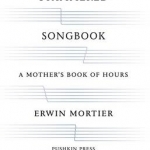
Stammered Songbook: A Mother's Book of Hours
Clare Skeats, Erwin Mortier and Paul Vincent
Book
'My mother, a house that is slowly collapsing, a bridge dancing to a tremor.' It started when she...
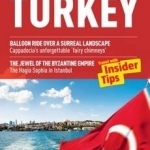
Turkey Marco Polo Pocket Guide
Jurgen Gottschlich, Dilek Zaptcioglu and Jochen Schurmann
Book
Fully revised and updated for 2016. Now with new Discovery Tours chapter. With this up-to-date,...

Lower Normandy
Book
The sixth in the popular French Impressions series, taking the form of a personal travel narrative...
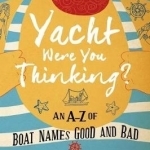
Yacht Were You Thinking?: An A-Z of Boat Names Good and Bad
Book
Naming a boat is as personal as naming a baby (even if few male skippers would risk telling the wife...
